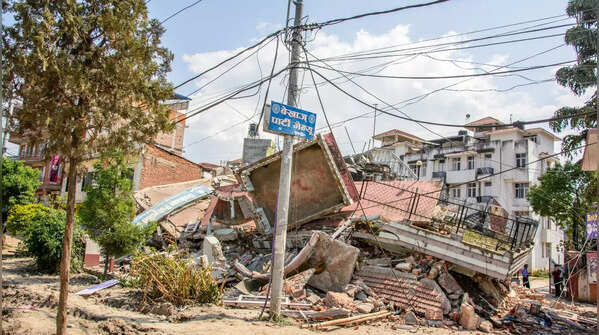Myanmar jolted by deadly tremors: Looking back at 7 most catastrophic earthquakes in history

Myanmar hit by 7.7 tremors: These are 7 most catastrophic earthquakes in history
Earthquakes have left an indelible mark on human history, jolting the very foundations of cities. It also causes terrible after effects for a prolonged period of time that takes to restore the damaged infrastructure, and the larger loss to life. These natural disasters strike with unimaginable power, tearing apart ladmasses, buildings, and lives in mere seconds. Their destructive aftermath leaves the survivors grappling with loss, homelessness, and the daunting task of rebuilding the impacted communities. Earthquakes are a reminder of nature's unpredictable forces that cause collapsing infrastructure and devastation. Here are seven of the most destructive earthquakes that remain etched in the annals of history, as examples of the havoc they can wreak.

Chile – February 27, 2010
An 8.8 magnitude earthquake struck off Chile’s coast, causing tsunamis that rippled across the Pacific Ocean. Hundreds died, while thousands were displaced. Towns and highways were left in ruins, and large infrastructure was severely damaged. The event also brought to light Chile’s vulnerability along the Pacific Ring of Fire, a seismically active zone where tectonic plates meet.

Pakistan – October 8, 2005
This 7.6 magnitude earthquake devastated northern Pakistan and parts of India, killing over 80,000 people and leaving nearly 70,000 injured. Reports suggest that landslides and collapsing buildings left about four million homeless. Access to remote areas was blocked for days, that made rescue efforts difficult. Pakistan is very susceptible to earthquakes because it lies along the collision boundary of the Indian and Eurasian tectonic plates. This seismic zone covers the Himalayas and the Chaman Fault system, and the country experiences frequent and powerful earthquakes.

Indonesia – December 26, 2004
A 9.1 magnitude earthquake off the coast of Sumatra caused a devastating tsunami, which claimed more than 2,30,000 lives in 12 countries. Indonesia suffered the most, losing 1,68,000 lives. The waves of the tsunami devastated coastal settlements and uprooted millions of lives. The vibration due to the Earthquake not only resulted in infrastructural damage, but also altered Earth's axis and rotation. It is one of the deadliest natural disasters to have occurred.

Japan – January 17, 1995
The Kobe earthquake (magnitude 6.9) killed more than 5,000 people and resulted in huge damages of over $100 billion. Over 2,00,000 buildings collapsed, and it is the most expensive earthquake damage in history. The high-density areas of Japan experienced extensive infrastructure loss, and numerous survivors suffered long-term problems. The disaster highlighted the necessity for better urban earthquake readiness.

Southern California – January 17, 1994
The Northridge earthquake struck with a magnitude of 6.7, killing 60 people and causing damages that were estimated at $44 billion. Over 40,000 buildings across Los Angeles, Orange, Ventura, and San Bernardino counties were affected. Fortunately, the quake hit at 4:30 a.m., and did not happen during peak traffic hours, possibly reducing potential casualties. This devastating qukae completely changed the seismic safety regulations in California.

Central California – October 18, 1989
The Loma Prieta earthquake that was registered 6.9 on the Richter scale, shook the San Francisco Bay Area during the 1989 World Series. It killed 63 people, injured hundreds, and caused $6 billion in damages. Freeways stood jammed , and homes were left crumbled, this quake left thousands of people homeless.

China – July 27, 1976
Tangshan experienced a catastrophic 7.5 magnitude earthquake, resulting in an official death toll of around 250,000, although some estimates suggest fatalities might have been as high as 655,000. Entire communities were flattened, and survivors faced unimaginable loss. China lies within the Pacific Ring of Fire, which experiences intense seismic and volcanic activity frequently. This tectonic region houses parts of China making it vulnerable to frequent earthquakes and natural disasters.Apart from this, On April 25, 2015, Nepal endured a catastrophic 7.8 magnitude earthquake near Gorkha District, claiming nearly 9,000 lives and displacing 3.5 million. Ancient UNESCO heritage sites in Kathmandu Valley crumbled, while avalanches on Mount Everest and Langtang Valley worsened the devastation. Similarly, on January 26, 2001, Bhuj, Gujarat, was struck by a 7.7 magnitude quake, killing over 20,000 and injuring 166,000. Entire towns were destroyed, with widespread liquefaction sinking structures into the ground.







